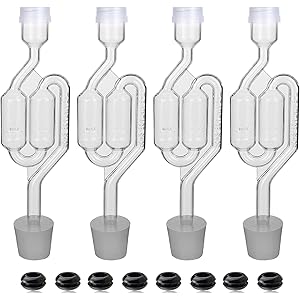Understanding Fermentation
Fermentation is a metabolic process that converts sugar to acids, gases, or alcohol using microorganisms such as bacteria, yeast, or fungi. This process is essential in various scientific disciplines, including microbiology and biochemistry, and serves as a foundation for numerous applications in food production, biofuel generation, and pharmaceuticals. By exploring fermentation through free science lessons, students can gain a deeper understanding of these biological processes and their significance in everyday life.
The Science Behind Fermentation
At its core, fermentation involves the breakdown of carbohydrates in the absence of oxygen, a process known as anaerobic respiration. During this process, microorganisms utilize enzymes to convert sugars into energy, producing byproducts like ethanol and carbon dioxide. Understanding the biochemical pathways involved in fermentation can enhance students’ appreciation for the complexity of life at the microscopic level. Free science lessons on fermentation can provide hands-on experiments that illustrate these concepts, making learning both engaging and informative.
Types of Fermentation
There are several types of fermentation, each with unique characteristics and applications. The most common types include alcoholic fermentation, lactic acid fermentation, and acetic acid fermentation. Alcoholic fermentation, primarily carried out by yeast, is crucial in the production of beverages like beer and wine. Lactic acid fermentation, on the other hand, is utilized in the production of yogurt and sauerkraut. By incorporating these different types of fermentation into free science lessons, educators can showcase the diversity and importance of this process in various industries.
Applications of Fermentation in Food Science
Fermentation plays a vital role in food science, contributing to the preservation, flavor, and nutritional value of many foods. Through fermentation, foods can develop unique flavors and textures, enhancing their appeal and marketability. For instance, the fermentation of cabbage into sauerkraut not only preserves the vegetable but also enriches it with probiotics, beneficial bacteria that promote gut health. Free science lessons that focus on food fermentation can inspire students to explore culinary science and appreciate the art of food preservation.
Fermentation in Biofuel Production
In recent years, fermentation has gained attention for its potential in biofuel production, particularly ethanol. By fermenting biomass, such as corn or sugarcane, microorganisms can produce ethanol, a renewable energy source that can replace fossil fuels. Understanding the fermentation process involved in biofuel production is crucial for students interested in sustainable energy solutions. Free science lessons that cover this topic can empower the next generation of scientists and innovators to explore alternative energy sources.
Microorganisms Involved in Fermentation
Various microorganisms are responsible for fermentation, each playing a specific role in the process. Yeasts, such as Saccharomyces cerevisiae, are commonly used in alcoholic fermentation, while lactic acid bacteria, like Lactobacillus, are essential for lactic acid fermentation. Understanding the characteristics and functions of these microorganisms can enhance students’ knowledge of microbiology and its applications. Free science lessons that include microscopy or culture techniques can provide hands-on experiences that deepen this understanding.
Get more content like this!
Sign up to receive updates and new terms first hand.
The Role of Temperature and pH in Fermentation
Temperature and pH are critical factors that influence the fermentation process. Each microorganism has an optimal temperature range and pH level for growth and activity. For example, yeast typically thrives in warmer temperatures, while lactic acid bacteria prefer slightly acidic environments. By conducting experiments that manipulate these variables, students can observe firsthand how they affect fermentation outcomes. Free science lessons that incorporate these experiments can foster critical thinking and scientific inquiry.
Fermentation and Environmental Impact
The fermentation process can also have significant environmental implications. For instance, the production of biofuels through fermentation can reduce greenhouse gas emissions compared to traditional fossil fuels. Additionally, fermented foods often require fewer preservatives and additives, making them a more sustainable choice for consumers. Free science lessons that address the environmental aspects of fermentation can encourage students to think critically about their food choices and the impact of those choices on the planet.
Exploring Fermentation Through Experiments
Hands-on experiments are an effective way to engage students in the study of fermentation. Simple experiments, such as creating homemade yogurt or brewing root beer, can illustrate the principles of fermentation in a fun and interactive manner. By observing the fermentation process in real-time, students can develop a deeper understanding of the science behind it. Free science lessons that emphasize experiential learning can make complex scientific concepts more accessible and enjoyable.
Resources for Fermentation Science Lessons
There are numerous resources available for educators seeking to incorporate fermentation into their science lessons. Online platforms, educational websites, and science kits can provide valuable materials and guidance for teaching fermentation concepts. Additionally, local universities and community colleges may offer workshops or demonstrations on fermentation techniques. By utilizing these resources, educators can create dynamic and informative free science lessons that inspire students to explore the fascinating world of fermentation.




